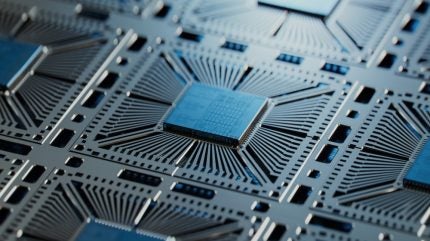
As demand for faster, smaller, and more energy-efficient electronics intensifies, advanced packaging has emerged as a critical enabler of progress in the semiconductor industry.
By integrating multiple chips and components into compact, high-performance assemblies, advanced packaging technologies are pushing the boundaries of what is possible in computing, telecommunications, and consumer devices.

Discover B2B Marketing That Performs
Combine business intelligence and editorial excellence to reach engaged professionals across 36 leading media platforms.
Yet, with innovation comes complexity, and the journey forward is marked by both formidable challenges and promising opportunities.
Shrinking geometries and growing complexities
One of the central drivers of advanced packaging is the need to overcome the limitations of traditional Moore’s Law scaling.
Rather than simply shrinking transistors on a single chip, engineers are now turning to heterogeneous integration—combining different dies, often built on different process nodes, into a unified system.
Techniques such as 2.5D and 3D integration, chiplets, and system-in-package (SiP) designs enable this approach, improving bandwidth and reducing latency while conserving power and space.

US Tariffs are shifting - will you react or anticipate?
Don’t let policy changes catch you off guard. Stay proactive with real-time data and expert analysis.
By GlobalDataHowever, these innovations introduce a host of design and manufacturing complexities. Aligning multiple dies with micron-level precision, managing thermal profiles, and ensuring signal integrity across interposers and through-silicon vias (TSVs) require sophisticated engineering.
As packaging architectures become more intricate, testing and yield management become more difficult, often inflating production costs. The lack of standardisation in chiplet interfaces and interconnect protocols adds another layer of complexity, slowing down broader adoption.
Furthermore, packaging must now accommodate high-density interconnects, low-loss materials, and advanced substrates—all of which demand new investments in research, tooling, and infrastructure.
Foundries and OSAT (outsourced semiconductor assembly and test) providers are under pressure to evolve their capabilities, but not all players can afford the capital or talent to keep pace. This has led to a fragmented landscape, where only a few leading firms dominate the high-end packaging space.
Material innovation and sustainability concerns
As performance expectations grow, so does the demand for advanced packaging materials that can handle heat, minimise interference, and support high-speed data transmission.
Traditional organic substrates are increasingly giving way to alternatives such as glass, ceramic, and silicon interposers, each offering unique advantages in terms of electrical performance and thermal conductivity.
Yet, new materials bring their own set of trade-offs. Glass substrates, for example, offer excellent flatness and signal integrity but pose challenges in terms of brittleness and manufacturability.
Similarly, managing coefficient of thermal expansion (CTE) mismatches between different materials is critical to prevent warping or delamination during thermal cycling.
Beyond performance, the industry is also grappling with the environmental impact of advanced packaging.
As manufacturing processes become more resource-intensive, concerns around energy consumption, chemical usage, and waste generation are mounting. Regulatory pressures and corporate sustainability goals are forcing firms to consider eco-friendly alternatives in materials and process flows.
Efforts are underway to reduce the carbon footprint of packaging by minimising the number of layers, using recyclable materials, and optimising thermal management to reduce power usage in end devices.
However, these strategies are still in early stages, and scaling them without compromising performance remains a challenge.
Market adoption and future prospects
Despite technical and economic hurdles, the market outlook for advanced packaging remains robust.
With artificial intelligence (AI), 5G, autonomous vehicles, and edge computing driving demand for high-performance, energy-efficient processors, advanced packaging is becoming a key differentiator in system design.
Chiplet architectures, in particular, offer manufacturers the flexibility to mix and match IP blocks across nodes, enabling faster time-to-market and cost efficiencies.
Leading semiconductor firms are investing heavily in packaging R&D, recognising its strategic value. Intel’s Foveros and EMIB technologies, TSMC’s CoWoS and InFO platforms, and Samsung’s X-Cube all demonstrate how advanced packaging has become a focal point in the global chip race.
These proprietary solutions aim to balance performance, scalability, and yield—often with proprietary ecosystems that can lock in customers.
Meanwhile, industry collaborations are emerging to address standardisation and interoperability challenges. Initiatives like the Universal Chiplet Interconnect Express (UCIe) are working to define open standards for chiplet communication, potentially accelerating broader adoption and reducing development costs.
Looking ahead, the convergence of advanced packaging with emerging technologies such as photonic interconnects, quantum computing, and neuromorphic architectures promises to reshape the semiconductor landscape.
As packaging shifts from a backend concern to a frontline innovation arena, it will play an increasingly central role in defining the capabilities and economics of future electronic systems.
Looking ahead
Advanced packaging sits at the intersection of opportunity and challenge, reshaping the way chips are designed, manufactured, and integrated.
While the path forward involves overcoming significant technical and environmental hurdles, the prospects are compelling.
As industries continue to seek greater performance in smaller, more efficient forms, the role of advanced packaging will only grow in significance.
For engineers, manufacturers, and policymakers alike, understanding this evolving domain is key to navigating the future of technology.





